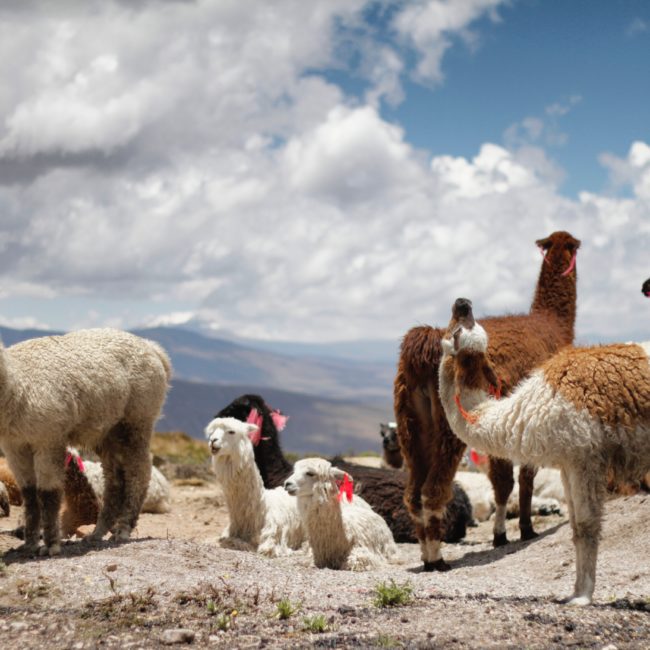
Bolivia is located in central South America. As a landlocked country, it borders Brazil, Paraguay, Argentina, Chile, and Peru.
It spans nearly 1.1 million square kilometers, and is the world’s 28th largest country. Many travelers visiting Bolivia make it a point to visit the famous salt flats, known as the Salar de Uyuni. The population of Bolivia, as of 2018, is 11,215,674 with a density of 10 P/Km2. It is also known to have the largest number (over three dozen types) of native groups in South America.
We help you fulfill your bucket list!
If you don’t see what you’re looking for, we would love to help create custom solutions and reach out to you!
Country Information
Citizens and travelers from the United States are required to self-isolate. Travelers are required to quarantine for at least 10 days after entering Bolivia. They will also be required to submit a sworn statement of location of stay within Bolivia. All travelers entering Bolivia will need to have another RT-PCR test taken 7 days after arrival. The traveler will cover the cost of the test.
A valid passport is required upon entry to Bolivia expiring a minimum of 6 months past the date of entry into the country. US citizens traveling to Bolivia require a tourist visa. It is best to obtain a visa prior to one’s arrival, but may be purchased in some ports of entry using US dollar bills upon arrival. Tourist visas cost $160 for US travelers. The tourist visa can be used for up to three trips per calendar year, and will last for a 10-year period, with a maximum stay of ninety days, yearly.
Every traveler planning to visit Bolivia should be fully up to date on his or her routine vaccines prior to entering Bolivia. Additionally, the CDC recommends that people visiting Bolivia get vaccinated for Yellow Fever, MMR, DPT, Typhoid, Hepatitis A, Hepatitis B, and Rabies. Any travel clinic will be able to provide the necessary vaccinations.
Bolivia’s climate is broken into two seasons: the dry season and the rainy season. The dry season, also known as Bolivia’s winter, takes place from May to October. Temperatures are generally lower, with moderate weather during the day to freezing cold at night. The rainy season, or summer in Bolivia, occurs from November to March. The days are typically warmer and more humid, with more mild evening temperatures.
The country code used for calling someone in Bolivia is +591. The cell phone service in the country is good and is widespread across the country. Though the service may be slightly patchy in some rural areas, for the most part cell coverage is widely available. The access to the Internet is very good in Bolivia. Most cafes, restaurants, malls, and hotels all will have Internet with adequate speed.
Bolivia’s standard voltage is 220-230AC which cycles at 50HZ. Some older buildings in Bolivia use 110V outlets, so be sure to check before plugging your device in. Two types of plugs are most commonly used in Bolivia: one with two flat parallel pins and the other with two round pins. Travelers from the States will most likely need a power plug adapter.
The Centers for Disease Control and Prevention (CDC) has issued a Level 4 Travel Health Notice for Bolivia due to COVID-19, which indicates a very high level of COVID-19 infection in the country. Please visit the Embassy’s COVID-19 page for more details on COVID-19 in Bolivia.
If you decide to travel to Bolivia:
- Visit the CDC’s webpage on Travel and COVID-19.
- Monitor local media for breaking events and be prepared to adjust your plans.
- Contact your airline or tour operator prior to travel.
- Avoid demonstrations and crowds.
- Enroll in the Smart Traveler Enrollment Program (STEP) to receive alerts and make it easier to locate you in an emergency.
- Prepare a contingency plan for emergency situations. Read the Traveler’s Checklist before your trip.
The boliviano ($b) is the official currency used in Bolivia. Using US dollars in larger cities is acceptable, but not in smaller towns. It is best to exchange your money at an official money exchange location, bank or even at the airport in the US or upon arrival. ATMs are also in many cities in Bolivia, as well as larger towns but not everywhere.
Approximately 70% identify as Mestizo (combined Native American and European Ancestry), 20% are indigenous Bolivian, 5% identify as white Bolivian, around 1% as black Bolivian, and 4% as other ethnic groups.
For a long time, Bolivia had three official languages. Currently, there are 36 indigenous languages recognized by the Bolivian constitution. The original three include Spanish, Aymara and Quechua. Spanish is spoken by nearly one third of the population. Aymara and Quechua are spoken by one third of the population. The remaining portion of the population speak other languages, including Guaraní.
Most of the people in Bolivia are part of the Roman Catholic, making up 76.8% of the population. 8.1% identify as Evangelical and Pentecostal, another 7.9% as Protestant, 1.7% as other, and 5.5% report having no religious beliefs.
Bolivia is presented as a presidential republic. The president, Evo Morales Ayma is both the chief of state and the head of government. He was elected into office on January 22, 2006. The Vice President is Alvaro Garcia Linera, assumed this position in office on January 22, 2006, as well. The members of the cabinet are appointed by the president.
Since 2001, Bolivia’s leading export has been soybeans. The country also exports cotton, coffee, and sugarcane. It is also one of the world’s largest producers of coca. It is one of the least developed countries in Latin America. The National Economic and Social Development Plan was approved by the Government of Bolivia for 2016-2020. It aims to reduce the poverty incidence by maintaining a growth of 5%.


